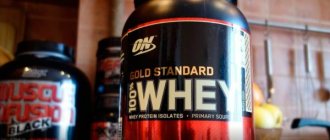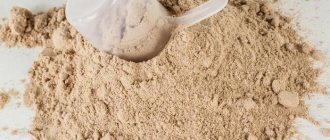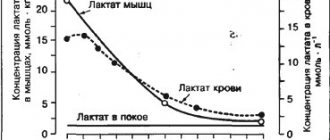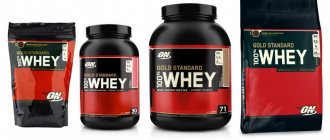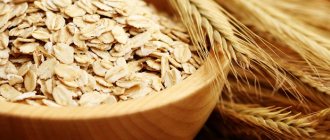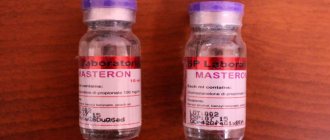How is whey protein made?
Whey protein is an animal protein made from whey, a byproduct of cheese production. Modern technological processes have made it possible to isolate whey proteins from whey. This is done using ultrafiltration, which removes fat and lactose from the whey and then grinds the product. Depending on the flavor of the protein supplement, flavors, colors, and sweeteners are added to the powder—usually sucralose or acesulfame K. In addition, products offered by manufacturers include thickeners and stabilizers.
Trends
The latest market trend is the creation of combined protein drugs. For example, casein is added to whey protein. It is absorbed slowly and serves as a source of replenishment of amino acid levels in the blood for a long time. The combination of whey protein and casein is suitable for taking during the day and before bed. It allows you to avoid catabolism caused by a long break between meals and a night break in nutrition.
Recently, soy protein concentrate or isolate has been added to protein. It digests almost as quickly as whey protein and is high in arginine, glutamine and BCAAs. In addition, soy protein speeds up recovery.
Some of the new protein products include egg protein. By definition, it is devoid of carbohydrates and actively affects the secretion of anabolic hormones.
Types of Whey Protein Supplements
There are three whey supplements:
• Whey protein concentrate (WPC) - the most popular product, contains 80% protein, the remaining ingredients are carbohydrates, fats and water, about 130 kcal per serving.
• Whey Protein Isolate (WPI) is a product that has been stripped of most fats and carbohydrates, containing about 90% protein, about 90 kcal per serving.
• Whey Protein Hydrolyzate (WPH) is the best, purest protein with excellent absorption, contains up to 100% protein, about 115 kcal per serving.
The benefits of whey - what is worth knowing?
The proteins contained in whey are richer in biologically active substances than any other protein. There have been those in the past who have disputed this, but today no one doubts that whey protein is the best protein. It can build flexible, strong and healthy muscles, not just increase muscle mass. Therefore, it is the most beneficial protein not only for bodybuilders, but also for martial arts and athletics athletes.
The absorption of natural vitamins and minerals included in the serum is unparalleled. This is due to its anabolic properties, which means that it promotes beneficial physicochemical (building, synthesizing, assimilation) processes in the body. This occurs, for example, when complex compounds are formed from simpler ones. Do not confuse anabolic properties with anabolic steroids! The anabolic processes promoted by whey do not have negative side effects.
Whey Protein Concentrate - Product Ingredients
Whey protein concentrate consists mainly of protein. The content of the product ranges from 21 to 25 g of protein, which represents at least 80% of the product (hence the popular term WPC 80). The rest is carbohydrates, fats and water. The higher the content of carbohydrates and fats in a product, the higher its calorific value. When choosing a protein supplement, you should pay attention to the composition. To allow people with lactose intolerance to use whey protein, manufacturers add lactase, an enzyme that digests lactose, to some supplements. Whey protein concentrate with this supplement may be better tolerated by the body of a person with such intolerance. People with more sensitive digestive systems may also react poorly to protein supplements due to the sweeteners contained in the product. These are the most common intestinal complaints such as gas, gas or diarrhea.
Types of protein concentrates
If you are intolerant to lactose or soy, it is recommended to take egg concentrate. For vegetarians and those who fast, the soy option is suitable. In other cases, it is better to choose whey or egg proteins. The latter is absorbed better, but its price is several times higher.
Whey Protein Concentrate - Why is it worth adding whey protein to an athlete's diet?
Whey protein has one of the highest nutritional values among proteins. This is due to the high content of exogenous amino acids, which means those that we need to provide the body with food. Whey protein also contains all the branched chain amino acids BCAA (isoleucine, valine, leucine), which are essential for athletes, stimulate muscle regeneration after intense exercise and have anti-catabolic properties. In addition, whey protein is easily digested and quickly absorbed in the human digestive tract. Undoubtedly, the advantage is the simple and quick way to prepare the product and a wide selection of flavors.
Who should take milk protein?
Milk protein is an excellent solution for all those who want to increase their protein intake.
Milk protein sources are affordable, widely available, and come in a variety of flavors. Athletes can use milk protein in their shakes to help them recover immediately after a workout. Milk protein is a great addition to your morning smoothie. Those looking to lose weight can also add it to a meal replacement shake, while those looking to gain weight can add it to their regular meals to boost their protein intake and add calories.
How to use whey protein concentrate?
Whey protein should be consumed first after exercise to support muscle regeneration after strenuous exercise and suppress catabolic processes. The easiest way to prepare it is to mix a portion of the powder - from 20 to 30 grams (depending on the manufacturer) with water or milk. By combining whey protein with any fruit and source of healthy fats (flaxseeds, nuts, peanut butter, avocado), we can create a great, healthy post-workout meal. This alternative is worth having when we don't have time to eat regularly after training. When supplementing with whey protein post-workout, there is no need to consume BCAA's separately. Protein supplements can also be added to smoothies, omelettes, porridges or other sweet dishes, up to 30g, to supplement your daily protein intake. For people reducing body fat, the sweet taste of conditioner can be a great addition to the menu.
Admission rules
Each manufacturer calculates the dosage of the supplement in its own way, but the optimal portion is considered to be 30 g of pure protein per dose. A larger amount may simply not be absorbed and have a negative impact on the liver.
It is recommended to take one to three servings per day.
If a person is accustomed to consuming small amounts of protein in food, then he should not start taking protein concentrate with large doses. The eating style needs to be changed gradually, evenly increasing portions.
If a beginner who wants to quickly build muscle or lose weight starts with large doses, he may develop adverse reactions, problems with the gastrointestinal tract and liver. The body cannot absorb more protein than it is used to.
The concentrate is taken by diluting it with any liquid. If an athlete needs to dry out, it is recommended to use plain water or low-fat dairy products. If the supplement is taken for the purpose of building muscle mass, it is better to dilute the product in juices and dairy products with normal fat content.
Production of whey powder
This is a basic technological process in which significant amounts of lactose and fat are removed from whey, after which whey protein is formed through a high-temperature drying process. This process is used for cheaper whey concentrates where the protein, due to its high temperature, is highly denatured and has lower bioavailability than whey powders produced by a more expensive process.
Using serum?
- Whey is a great base for baking, cooking or fitness.
- You can make a fruit smoothie from it.
- Can be used in soups or boiled compotes.
- You can cook dough and rice with it, as well as potatoes.
- Meat marinated in whey will be very tasty and crumbly.
- When baking, it can be used instead of water, you can make bread, cakes, dough, pizza and even waffles.
How the nutritional value of proteins can change during industrial processing
There are several main types of industrial protein processing - heating, freezing, drying, exposure to chemical reagents, fermentation. The most commonly used method is heat treatment, which is needed to inactivate microorganisms and endogenous enzymes that cause various changes in proteins during storage (for example, their oxidation). Heat treatment is also necessary to improve the organoleptic properties of the protein (taste and smell).
Another important effect of heat treatment is the elimination of an allergic reaction. Some proteins are allergenic, such as alpha-lactalbumin, beta-lactoglobulin and soy protein. But if they have been treated with high temperatures, possible allergic and hypersensitivity reactions are eliminated. The problem is that very often heat treatment and other denaturation methods negatively affect the nutritional value of the protein.
Moderate heat treatment
Most food proteins are partially denatured by moderate heat treatment at 60-90°C (treatment duration is no more than 60 minutes). This process reduces the solubility of proteins and consequently impairs solubility-dependent functional properties. However, from a protein quality perspective, partial denaturation improves protein digestibility and bioavailability of essential amino acids. For example, egg whites and some purified plant proteins have poor digestibility even when protease inhibitors are removed. However, moderate temperature treatment increases this indicator without the formation of toxic derivatives.
Also, with moderate heat treatment, in addition to proteases, lipases, lipoxygenases, amylases, polyphenoloxidases and some other enzymes are inactivated, the activity of which during storage can lead to changes in the taste and color of the protein. For example, proteins from oilseeds and legumes contain a lot of lipoxygenase. This enzyme is dangerous because in the presence of oxygen it catalyzes the oxidation of polyunsaturated fatty acids to hydroperoxides. As a result, aldehydes and ketones are formed, which lead to off-flavors in soy flour and soy protein isolates. But if lipoxygenase is inactivated by heat treatment before grinding the seeds or beans, there is no change in taste.
Heat treatment is more beneficial for plant proteins than for proteins of animal origin, because plant proteins contain many so-called anti-nutritive substances. For example, these are the already mentioned trypsin and chymotrypsin inhibitors, which significantly reduce protein digestibility and, accordingly, its bioavailability. The danger of these inhibitors is that their activity leads to increased production of trypsin and chymotrypsin, which can lead to hypertrophy and pancreatic adenoma. Lectins, which have a high affinity for carbohydrates, not only impair the absorption of the protein they are supplied with and reduce the absorption of other nutrients, but are also phytohemagglutinins. This is the name for substances that lead to agglutination (“sticking together”) of red blood cells – erythrocytes.
Since all these substances contained in plant proteins are heat labile, heat treatment solves these problems. For example, steaming soy flour, frying beans and oilseeds prevents pancreatic hypertrophy and increases protein efficiency. The same inhibitory substances are found in egg and milk whites. In egg it is ovomucoid and ovoinhibitor, in milk it is plasmenogen activator inhibitor (PAI) and plasmin inhibitor (PI). In the presence of water and moderate heat treatment, these inhibitors are inactivated. Some toxins are also inactivated, for example, enterotoxin, which is produced by Staphylococcus aureus. At the same time, the degree of denaturation is insufficient to reduce the functional properties of milk proteins.
Specifics of the production of protein concentrates and isolates
Protein isolates are obtained from raw materials by various methods - extraction, isoelectric precipitation, thermocoagulation, ultrafiltration and difiltration. Some proteins may be lost during some methods, for example, sulfur-rich albumin-like proteins during isoelectric precipitation may remain in the supernatant (that is, in the supernatant). This means that some of the native proteins will not be included in the final product; accordingly, the amino acid composition changes and the biological value of the isolate decreases compared to the original raw material.
However, for example, in whey concentrates, which are produced by ultrafiltration and diafiltration, the amino acid composition does not change. In this case, the physical and functional properties of proteins (in particular, globular proteins of whey concentrates) do not change. However, their proteose peptone composition changes, and as a result, their foaming properties change.
Chemical changes in amino acids
Unlike low-temperature processing, which can only change the properties of the protein, high-temperature processing triggers a number of processes that occur directly with amino acids. These are the processes of racemization, hydrolysis, desulfurization (loss of sulfur) and deamidation. Almost all of them are irreversible, but the danger is that some of them can form structurally modified types of amino acids that exhibit toxicity.
Potential Hazards of Some Denaturation Processes
When proteins are processed at high temperatures under alkaline pH conditions, partial racemization occurs, during which L-amino acid residues are converted into D-amino acid residues. Racemization is also possible during the hydrolysis reaction and when the protein is heated to 200 °C. The negative side of this process is that the peptide bonds between D-amino acids are less susceptible to enzymatic hydrolysis than the peptide bonds of L-amino acids. That is, such protein is absorbed worse. In addition, during racemization, essential amino acids are partially lost and the biological value of the protein is reduced.
Also, heat treatment in an alkaline environment, in addition to racemization, leads to the destruction of arginine, serine, threonine, lysine (for example, arginine decomposes to ornithine). When heated to 200 °C, most amino acid residues decompose. Such heating is possible not only in production, but also in everyday life, for example, cooking meat on the grill. The danger of processing protein at such temperatures is that pyrolysis (decomposition) of amino acid residues leads to the formation of a number of products for which the Ames test showed high mutagenicity. The most mutagenic and carcinogenic amino acid residues are formed during the pyrolysis of tryptophan and glutamic acid.
Mutagenic compounds formed in meat at high temperatures are called imidazoquinolines. These are products of the general condensation of carbohydrates, creatine and one or more amino acids - glycine, threonine, alanine, lysine.
Also, during the processing of proteins in an alkaline environment, so-called “crosslinks” can form between molecules and within molecules. The danger of the process is that, for example, the lysinoalanine cross-link cannot be cleaved by trypsin; accordingly, these amino acids are not absorbed. Therefore, the formation of cross-links reduces the digestibility and biological value of the protein. However, the problem is broader, because the lysinoalanine cross-link prevents nearby molecules from being absorbed. In this case, lysinoalanine itself is absorbed by the intestinal walls, but is not absorbed by the body and is excreted in the urine. Thus, when processing a protein in an alkaline environment, it is important to minimize the amount of lysinoalanine, although for humans the appearance of such cross-links does not produce a nephrotoxic effect (this effect was noted in mice).
When processing milk, even at a neutral pH, high temperatures lead to the formation of lysinoalanine. To suppress this process, cysteine, ammonia or sulfites are introduced. The safest option is not to process milk protein at high temperatures at all, leaving it native. In this case, there is either no lysinoalanine at all, or its amount is insignificant. Also in this case, the protein retains high digestibility and biological value (accordingly, it is of high quality).
Under what conditions do the functional properties of proteins change?
Minor denaturation (eg processing at moderate temperatures) is usually desirable for proteins because it provides the necessary level of solubility so that the protein can be used for its intended purpose. Moreover, in some cases partial denaturation can improve the functional properties of the final product. But some methods and technologies for protein isolation (isolation) worsen its properties.
For example, if a protein is isolated by isoelectric precipitation, the structures of most globular proteins remain stable, but if the proteins have voids (such as casein micelles), they are irreversibly destabilized. As a result of the collapse (compression) of the micellar structure, its properties change, which is also due to a change in the composition of the isolate compared to the original protein. This is explained by the fact that some of the protein fractions precipitate and do not end up in the final isolate.
In the production of whey protein concentrates and whey protein isolates, the method most often used is ultrafiltration, during which small dissolved impurities are removed, which largely affects the change in the non-protein composition of the final product. Removing lactose and ash changes the functional properties of the protein, and when the ultrafiltered concentrate is kept at a temperature of 50-55 ° C, the protein-protein interaction increases, resulting in changes in moisture-binding ability, gelation, foaming and emulsifying properties. At the same time, isolates obtained by ion exchange have lower ash content (calcium and phosphate content), therefore its functional properties are better than those of isolates obtained by filtration methods.
Keeping proteins at an alkaline pH greatly changes their amino acid composition, but they dissolve better. Chemical reagents can also be used for extraction, for example, hexane (a saturated hydrocarbon) is used to extract soybean and cottonseed oil. This treatment results in denaturation, as does high temperature treatment.
